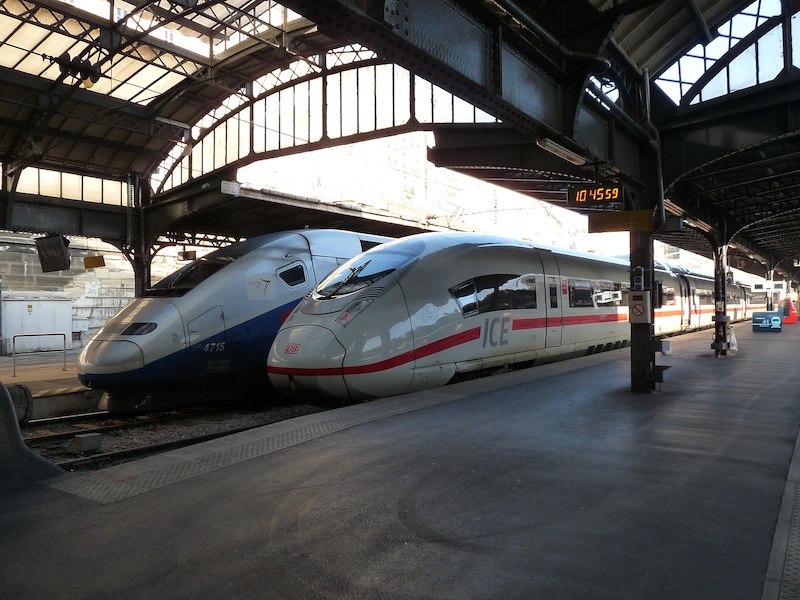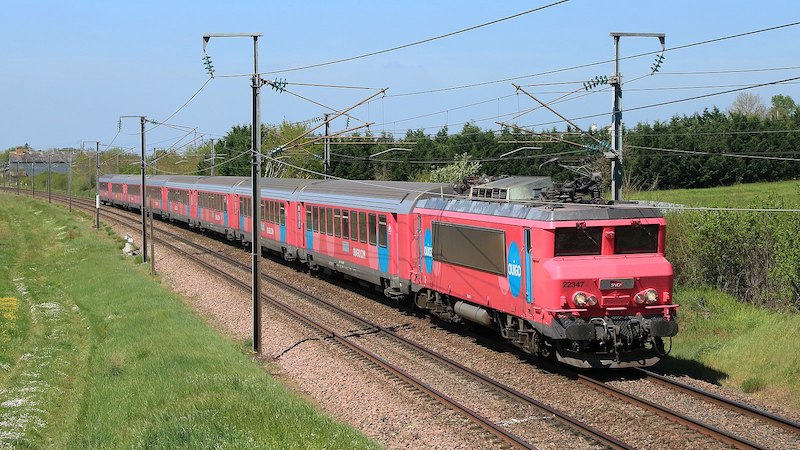Happy New Year! With 2022 now behind us, let’s take a look at the year’s transport news in the Paris region, along with what we can look forward to in 2023.
A lot is happening in transport here, so instead of a single post, this is the first instalment of a short series. To start with, we will focus on long-distance rail serving Paris. In the rest of the series, we will look at regional rail, the metro, tramways, and private vehicles and active travel. Then we will turn to the subject that’s been making headlines in the national press: the deterioriation of public transport in Île-de-France, which has been particularly pronounced since September 2022.
Night trains
The revival of night trains in Europe continues to progress. Two routes were (re-)launched at the end of 2021, linking Paris to Briançon in the Alps, and Lourdes in the Pyrenees. In summer 2022, the latter was extended to Hendaye on the Spanish border.
Looking ahead, Paris will get two new rail links with Berlin in December 2023. Passengers who prefer to travel at night can do so with Austrian state operator ÖBB aboard a Nightjet, like those already in service between Paris and Vienna. If you’d rather travel by day, Deutsche Bahn will have you covered, with a daily service aboard their high-speed ICE taking seven hours. This is the result of a collaboration with the SNCF, and if successful will be joined each day by a French TGV.

Low-cost services
Domestically, the SNCF’s Ouigo line of low-cost high-speed trains is expanding with new routes to Brest, La Rochelle and Perpignan.
But perhaps more significant is the launch of a new service called Ouigo Train Classique. Ouigo was launched in 2013 on the model of low-cost airlines, with strict baggage limits and no buffet car, but the same speeds as France’s traditional TGVs, which often offer journey times competitive with flying. Ouigo Train Classique offers an ultra-low-cost alternative, competing with carpooling – made popular by French platform BlaBlaCar – and coaches, which have taken off thanks to a 2015 legal reform. In place of high-speed trains, Ouigo Train Classique uses Corail trainsets, which were built for long-distance travel before the rollout of the high-speed network.
The first routes connect Paris with Lyon on the one hand, and Nantes on the other. At around 5 hours and 4 hours respectively, the journey times are comparable with driving, and more than twice as long as the TGV. Launched in April 2022, the service hopes to cash in on the segment of travellers with plenty of time, but not a lot of money. A savvy move in an era where cost of living is at the top of the political agenda.

A step towards the end of short-haul flights
In August 2021, France enacted the Climate and Resilience law. According to the government, this law included 48 of the 149 propositions introduced by the Citizens’ Convention on Climate held in 2019 and 2020. Though many of these were watered down, the law did introduce a number of interesting provisions, including financial help for the purchase of e-bikes and a ban on fossil energy advertising. It also included a ban on domestic flights where the journey can be achieved in less than two and a half hours by train. The ban on super-short-haul flights was the subject of an inquiry by the European Commission, in response to complaints from French airports accusing the government of discrimination. On 2 December 2022, the Commission approved the measure.
This is a great step in moving away from flying and towards less-polluting modes of transport; but as transport researcher Guilio Mattioli points out in this Twitter thread, it’s important not to overstate its importance. Flights under 500 km only represent 6% of aviation fuel burned across Europe.
To build on this welcome but limited progress, two things need to happen now. Firstly, the cutoff should increase to four hours at the very least, bearing in mind that for most city-to-city journeys, flying remains slower than trains for these distances. It should also apply to international travel – think Paris to London, Amsterdam, Brussels, Geneva, Frankfurt. Secondly, more work needs to be done to limit longer-distance flights. This is much harder politically, since easy alternatives don’t exist.

Up next
Almost two hundred years after Europe’s first railways were built, the continent’s network continues to develop. Naturally, Paris remains a major node in that network. But it’s also a major population centre with local transport needs. Next time, we’ll look at developments in regional rail, including new stations, new rolling stock and the electrification of one of Île-de-France’s last remaining diesel lines. Don’t forget to sign up to email updates below so you don’t miss the next instalment!
 Fabric of Paris
Fabric of Paris